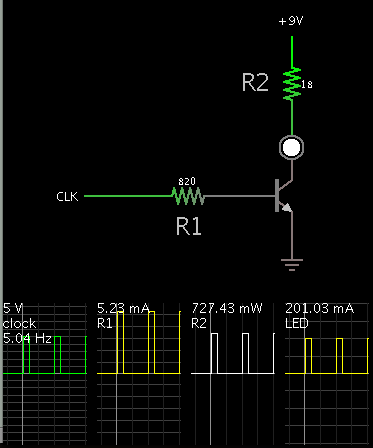melillo
Newbie level 2

I have to build a device where a circuit will flash a high brightness white LED. The flash frequency and intensity will be controlled by a PIC microcontroller. The frequency will vary from 1 to 12 Hz and the intensity will be controlled using PWM. The microcontroller part is not a problem: one of the PIC pin is toggled on and off at a low frequency, and the PWM signal (5KHz, variable duty cycle) is sent to another pin. These two pins are connected to the inputs of an AND gate, the output of the gate controlling the LED. I need some advices about choosing and connecting the right LED, the right LED driver and the right power supply.
The LED intensity must be in the 150 to 200 lumen range.
I have found this LED: https://www.digikey.ca/product-detail/en/L2-TGN1-F/492-1671-ND/3694225
141 lumen at 200mA, input voltage 5.2~5.3V. It is supposed to include the driver circuitry, although I haven’t seen it in the datasheet. Can I just use a 6V voltage regulator (MC7806CT), thru a transistor driven by the AND gate and connected directly to this LED? Also, do I have to use some sort of heatsink?
I also consider this LED: http://www.digikey.ca/product-detail/en/A008-EW830-Q2/788-1044-ND/2720735
In this case, what should I use for driver, power supply and heatsink? What’s the best way to connect it to my AND gate?
By the way, I have this driver right now: https://www.jameco.com/webapp/wcs/stores/servlet/Product_10001_10001_2156287_-1 Can it be useful?
I’d really appreciate some hints.
Thank you in advance and have a nice day.
Marc
The LED intensity must be in the 150 to 200 lumen range.
I have found this LED: https://www.digikey.ca/product-detail/en/L2-TGN1-F/492-1671-ND/3694225
141 lumen at 200mA, input voltage 5.2~5.3V. It is supposed to include the driver circuitry, although I haven’t seen it in the datasheet. Can I just use a 6V voltage regulator (MC7806CT), thru a transistor driven by the AND gate and connected directly to this LED? Also, do I have to use some sort of heatsink?
I also consider this LED: http://www.digikey.ca/product-detail/en/A008-EW830-Q2/788-1044-ND/2720735
In this case, what should I use for driver, power supply and heatsink? What’s the best way to connect it to my AND gate?
By the way, I have this driver right now: https://www.jameco.com/webapp/wcs/stores/servlet/Product_10001_10001_2156287_-1 Can it be useful?
I’d really appreciate some hints.
Thank you in advance and have a nice day.
Marc

